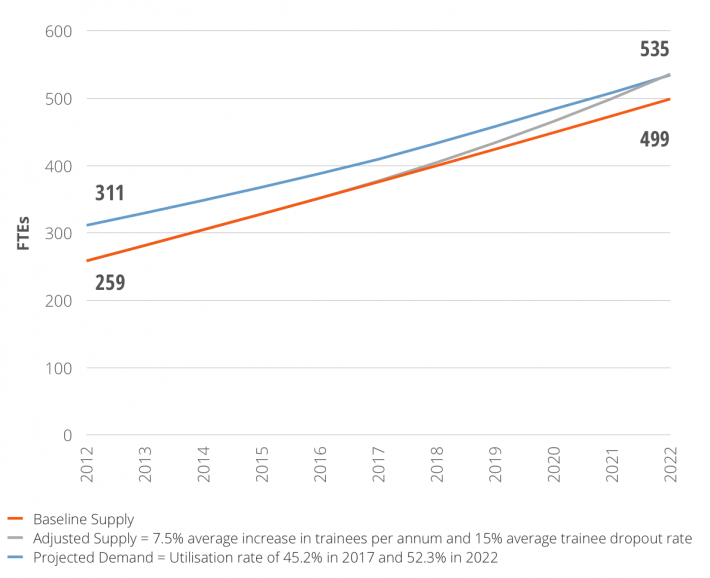Radiation Oncologist Workforce
Baseline workforce supply – business as usual
Starting from a base supply of 235.8 FTE professionals in 2011, the Radiation Oncologist baseline supply model, which assumes current entry and attrition trends will continue, projects a supply of 376 FTE professionals in 2017 and 499 FTE professionals in 2022. The precise difference between supply and demand depends, in large part, upon the utilisation rate that will be achieved in 2017 and 2022.
Target utilisation for radiation oncology- closing the gap in patient access
In 2017, with an utilisation rate of 45.2%, 410 FTEs would be required, resulting in a shortfall of 34 FTEs. If the target utilisation rate of 52.3% is to be achieved by 2022, the model projects that 535 FTEs would be required in 2022, resulting in a workforce shortfall of 36 FTEs (see Figure).
Radiation oncologist workforce in 2022 target utilisation scenario

Source: The Allen Consulting Group, 20127
What needs to be done
In order for supply to meet target utilisation in 2022, the intake of trainees over the years 2012 to 2017 needs to increase, on average, by around 7.5% each year (resulting in an inflow of 31 FTE trainees into the occupation in 2022, assuming the dropout rate from the trainee program remains at 15%). Historical data indicates that the intake of trainees has been increasing at a rate of only 2% per annum over the last 10 years.